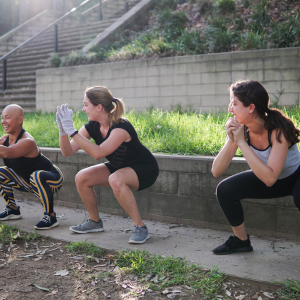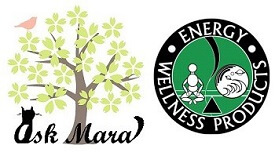Muscle strength is one of the most essential things needed to maintain health and independence as we age. Regular strength training not only helps to build and maintain muscle mass, but it also supports bone health, improves metabolism, and enhances overall physical function. Managing stress, eating nutrient-dense foods, staying active, and incorporating resistance training into your exercise routine will help you promote longevity and improve your quality of life as you age.
Managing Stress
Stress impacts the body by turning the focus from building health to managing a threat to your health. I call it chaos. If you or someone close to you has trouble dealing with stress, make sure to let them know it is manageable. Some tips to help can be meditation, deep breathing, diffusing essential oils, or talking with a professional. Stress negatively impacts your immune system, heart health, mood (anxiety and depression), and overall mental health. It also can contribute to obesity and metabolic syndrome. None of what we want as we age!
Focus on Self – Care to Maintain Health
 Nutrient-Dense Foods
Nutrient-Dense Foods
We are what we eat, and what we eat still matters as we age! Our bodies still need good food and lean protein to maintain energy and optimal health. Recent studies show that as we age, many of us are not getting the protein needed to maintain muscle strength and overall health. The RDA recommends 0.36 grams of protein per lb of body weight or 0.80 kg per kg of body weight. However, experts feel that as we age, the needed requirements actually need to be slightly higher and many of us are not even meeting the minimum. Remember, the RDA is based on the minimum amount needed to maintain health, not necessarily the ideal amount to build muscle or maintain it.
Focus on eating nutrient-dense foods and lean proteins. Limit your intake of processed and pre-prepared foods. Candy, cookies, cakes, pies, chips, and other boxed foods are often high in sugar, chemicals, and preservatives. Eat a variety of vegetables, including green leafy vegetables like kale, microgreens, collard greens, spinach, cabbage, romaine lettuce, arugula, and endive, to name a few.
Fruits also offer many antioxidant benefits; however, ensure they are not full of sugar. It’s best to focus on eating low glycemic fruits most of the time and sugary fruits some of the time. Low glycemic fruits include but are not limited to cherries, grapefruit, apricots, pears, apples, oranges, plums, strawberries, peaches, and grapes. View this informational chart for more information on the glycemic index of fruits. Fruits and vegetables offer a wide variety of health benefits. They are packed with vitamins, minerals, fiber, and antioxidants and are low in calories. They also help prevent diseases, including cancer and heart disease!
Healthy Fats
Eating healthy fats, including avocado, fish, olive oil, nuts, seeds, and nut butter is also essential. Fats provide energy, help the body absorb fat-soluble vitamins like A, D, and E, and are necessary for producing hormones. If you are not gluten-free and choose to eat grains, please ensure they are whole grains, not processed grains. Whole grains offer more fiber and nutrients that the body can better utilize.
Protein
Every cell in our body uses protein. It is vital in repairing and building muscles, bones, cartilage, and skin. It helps you maintain a healthy weight, increases fat burning, and curbs hunger and sugar cravings. Plays a role in hormones, digestion, and immune function and is a great energy source for the body. Protein sources can be animal source or plant-based. Animal sources include red meat, chicken, eggs, seafood, fish, milk, yogurt, cheese, and pork. Plant sources include tofu, beans, lentils, nuts, and seeds. If you need assistance or coaching with diet and a healthy lifestyle, check out our In-FORM Program.
Keep Moving and Stay Active
 Keeping active is essential for you as you age. Walking, jogging, riding your bike, taking some dance lessons, and HIIT Training (high-intensity interval training) are great ways to stay active. You don’t have to exercise an hour a day; carve out 20 to 30 minutes to walk, ride your bike, dance around the house, or do a one-mile HIIT session. When we are active, our energy and circulation improve.
Keeping active is essential for you as you age. Walking, jogging, riding your bike, taking some dance lessons, and HIIT Training (high-intensity interval training) are great ways to stay active. You don’t have to exercise an hour a day; carve out 20 to 30 minutes to walk, ride your bike, dance around the house, or do a one-mile HIIT session. When we are active, our energy and circulation improve.
Burning calories and building strength and muscle mass might be easier than you think. A full-body workout can be obtained, and you won’t need expensive equipment. You can do many exercises at home to achieve a full-body workout with hand weights, resistance bands, and kettlebells. You don’t even have to use weights in the beginning, use the weight of your arms and legs. Try simple yet effective moves for a full-body workout: Squats, push-ups, lunges, glute, bridge, plank, bicep curls, tricep curls, calf raises, stairs, and kettlebell swings. There are so many options and videos on this topic to guide you for an in-home workout. If you want another option to start moving, check out one of our SOQI Products.
The saying that you will lose it if you don’t use it is true! Maintaining your independence as you age has never been more important or necessary. Remember, it’s important to go at your own pace and focus on form over speed. Make sure to stretch before you work out, and spend a few minutes getting your heart rate up before you begin. When you’ve finished, cool down by stretching again. Here’s to health as we age!

 Nutrient-Dense Foods
Nutrient-Dense Foods